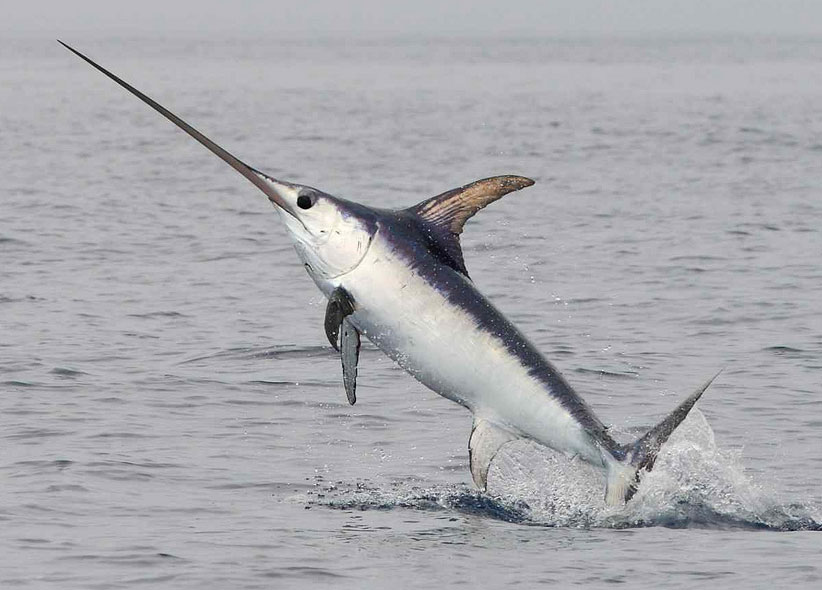
Meko style swordfish
Model of the multi-purpose frigate MEKO A-300 with an exemplary combat system. This ship became the basis for the development of the MEKO A-300PL concept design, which is the core of thyssenkrupp Marine's offering.
Systems in the Miecznik program.
In early February, a group of Polish journalists had a chance to learn about the proposal of the German shipbuilding holding thyssenkrupp Marine Systems, prepared in response to a program to build a frigate for the Polish Navy, codenamed Miecznik. We have already written a lot about the technical side of the initial draft of the proposed platform, which is the MEKO A-300, on our pages (WiT 10/2021 and 11/2021), so we will only recall its main assumptions. We will pay more attention to the industrial and corporate side, as well as the cooperation business model, which are an important part of the German proposal for Poland.
The shipbuilding holding thyssenkrupp Marine Systems GmbH (tkMS) is part of the thyssenkrupp AG corporation. He is also the owner of Atlas Elektronik GmbH, a manufacturer of electronic systems for surface and submarine boats. He is also a co-founder of consortiums such as kta Naval Systems AS (tkMS, Atlas Elektronik and Kongsberg Defense & Aerospace) for the production of submarine combat control systems.
The MEKO A-300 frigate has two "combat islands", and with them the necessary systems for the survival of the ship and the continuation of the battle are multiplied. On two superstructures, antennas of electronic systems are visible, and between them are launchers of anti-ship and anti-aircraft missiles. Attention is drawn to the recesses in the sides, covered with Faraday grids, which limit the effective area of radar reflection of these areas.
The portfolio of TKMS in the field of frigate-class surface ships currently includes units of the following types: MEKO A-100MB LF (light frigate), MEKO A-200 (general frigate), MEKO A-300 (multi-purpose frigate) and F125 ("expeditionary" frigate commissioned by Deutsche Marine). Over the past 40 years, 61 frigates and 16 types of corvettes and their modifications for 13 fleets of the world have been created or are being built on the basis of TKMS projects. Of these, 54 are currently in service, including 28 in five NATO countries.
The tkMS philosophy uses an evolutionary design spiral, which means that each new type of tkMS-designed frigate retains the best of its predecessors and adds new techniques and technologies as well as design features.
MEKO A-300PL for the Navy
The tkMS proposal is the MEKO A-300PL frigate project, which is a variant of the A-300 that meets Mechnik's original tactical and technical assumptions. MEKO A-300 is a direct successor to three frigates: MEKO A-200 (10 units built and under construction, three series), F125 (four built) and MEKO A-100MB LF (four under construction), and its design based on the design features of all of them. The MEKO system used in its design, i.e. MEhrzweck-KOmbination (multifunctional combination) is an idea based on the modularity of weapons, electronics and other necessary equipment included in the combat system, aimed at facilitating the customization of a specific solution to the needs of a given fleet, subsequent maintenance and reducing purchase and maintenance costs.
The MEKO A-300 frigate is characterized by: a total displacement of 5900 tons, a total length of 125,1 m, a maximum beam of 19,25 m, a draft of 5,3 m, a maximum speed of 27 knots, a range of > 6000 nautical miles. In her design, it was decided to use the CODAD (Combined Diesel And Diesel) propulsion system, which is the most cost-effective solution to acquire and the most cost-effective in the life cycle of a frigate. In addition, it maintains a very high standard of mechanical durability and has the least impact on the size and complexity of the frigate's design and the value of its physical signatures, especially in the infrared and radar bands, as is the case with CODAG and CODLAG. gas turbine systems.
The external feature that distinguishes the design of the MEKO A-300 are two "combat islands", each of which is equipped with independent systems necessary to ensure the unit's operability after its failure. These include: a redundant combat system, power generation and distribution systems, propulsion systems, damage protection systems, heating, ventilation and air conditioning systems, and navigation systems.
The MEKO A-300 frigate was designed to withstand underwater explosions thanks to impact protection and impact-resistance design. After the explosion, the frigate will remain afloat, able to move and fight (defend against air, surface, underwater and asymmetric threats). The unit is designed in accordance with the standard of unsinkability, which consists in maintaining positive buoyancy when any three adjacent compartments of the hull are flooded. One of the main watertight bulkheads is a double blast bulkhead specially reinforced to withstand and absorb the energy of the explosion and prevent longitudinal penetration as a result. It forms a vertical inner boundary between the aft and bow "combat island" and the forward and aft damage protection zones. The MEKO A-300 frigate was also equipped with ballistic shields.
The ship was designed according to Deutsche Marine's electrical redundancy philosophy, which means that any two generators can fail and the ship still has enough electrical power to meet the critical requirements of sailing, navigation and power needs. Four generators are located on two power plants, one on each "combat island". They are separated by five watertight compartments, which ensures a high degree of survivability. In addition, in the event of a complete loss of the main power plant, the frigate can use a retractable electric azimuth propulsion unit, which can be used as an emergency propulsion engine to achieve low speed.
The idea of two "combat islands" allows the MEKO A-300 frigate to maintain buoyancy and movement (movement, electricity, damage protection) and a certain degree of combat capabilities (sensors, executive bodies, command, control and communications - C3) on one of the islands, if some function will be disabled due to failure in combat or failure of this function on another. Thus, the frigate has two separate main masts and superstructure blocks on each of the two "combat islands", each of which contains sensors and actuators, as well as C3 elements to provide control, detection, tracking and combat in all three areas.
The main principle of the MEKO technology is the ability to integrate any combat system onto the A-300 frigate, including the combat control system (CMS) from a wide range of suppliers, through the use of non-standard mechanical, electrical, signal cooling integration interfaces. Thus, in more than a dozen types and subtypes of frigates and corvettes designed and delivered by TKMS over the past 30 years, various control systems of various manufacturers are integrated, including: Atlas Elektronik, Thales, Saab and Lockheed Martin.
In terms of combat system, the MEKO A-300 frigate is fully equipped to control, detect, track and combat long-range airborne threats, including tactical ballistic missiles, at distances of more than 150 km and for interaction with naval forces or as an integrated sensor platform / combat in the air defense zone.
The design of the MEKO A-300 is designed to integrate any anti-ship missile from a Western manufacturer. Their maximum number is 16, which makes it one of the most heavily armed units of its size.
To search for submarines, the frigate was equipped with: hull sonar, towed sonar (passive and active) and ship-based outboard sensors, frigates are integrated with the PDS network (up to two helicopters equipped with sonar and sonar buoys, up to two sonar, such as Atlas Elektronik ARCIMS). MEKO A-11 is equipped with Atlas Elektronik sonars operating at medium and high frequencies and specially designed for operation in the Baltic conditions.
The armament of the PDO includes: two triple 324-mm light torpedo tubes, two Atlas Elektronik SeaHake Mod 533 4-mm heavy torpedo tubes, two Atlas Elektronik SeaSpider four-barreled anti-torpedo tubes, four Rheinmetall MASS EM / IR anti-torpedo tubes. . The PDO systems of the MEKO A-300 frigate are adapted for the Baltic theater of operations. The coastal nature of this body of water, as well as hydrological conditions and the presence of reverberation, require the use of sonars of a higher frequency than on ships operating in the deep ocean.
